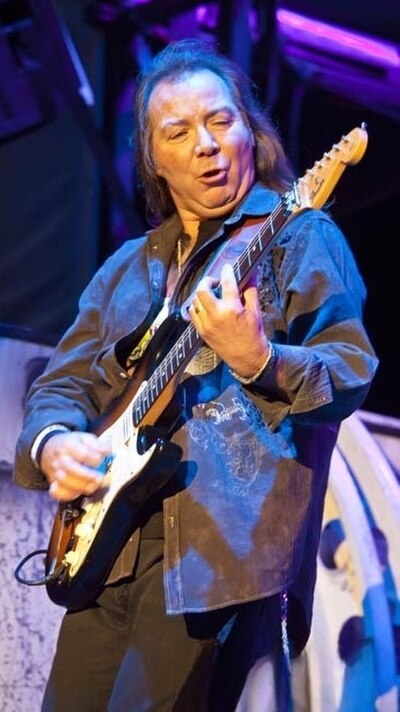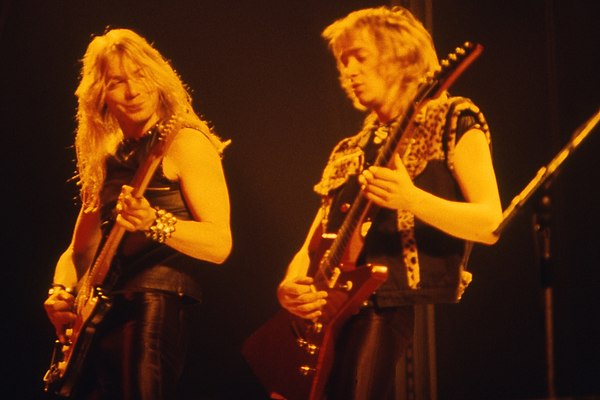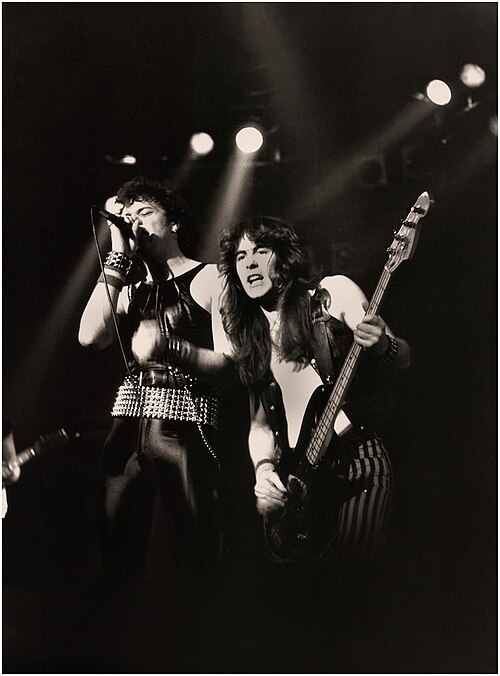Dave Murray (musician)
Videos
Page
David Michael Murray is an English guitarist, best known as a member of the heavy metal band Iron Maiden. He joined Iron Maiden early in its history, and is the second-longest serving member of the band after founder Steve Harris. He and Harris are the only members of Iron Maiden to have appeared on every album.

Murray performing in Melbourne, Australia on 4 March 2011

Murray (left) performing with Adrian Smith in 1982
Iron Maiden
Videos
Page
Iron Maiden are an English heavy metal band formed in Leyton, East London, in 1975 by bassist and primary songwriter Steve Harris. Although fluid in the early years of the band, the line-up for most of the band's history has consisted of Harris, lead vocalist Bruce Dickinson, drummer Nicko McBrain, and guitarists Dave Murray, Adrian Smith and Janick Gers. As pioneers of the new wave of British heavy metal movement, Iron Maiden released a series of UK and US Platinum and Gold albums, including 1980's debut album, 1981's Killers, and 1982's The Number of the Beast – its first album with Bruce Dickinson, who in 1981 replaced Paul Di'Anno as lead singer. The addition of Dickinson was a turning point in their career, establishing them as one of heavy metal's most important bands. The Number of the Beast is among the most popular heavy metal albums of all time, having sold almost 20 million copies worldwide.

Top: Steve Harris (L), Dave Murray (R) Middle: Adrian Smith (L), Bruce Dickinson (R) Bottom: Nicko McBrain (L), Janick Gers (R)

The Cart and Horses Pub, located in Maryland Point, Stratford, was where Iron Maiden played some of their first shows in 1976. The building was officially named "The Birthplace of Iron Maiden".

Dave Murray and Steve Harris in 2008. Harris and Murray are the only members to have performed on all of the band's albums.

Paul Di'Anno and Steve Harris supporting Judas Priest on their British Steel Tour, 1980